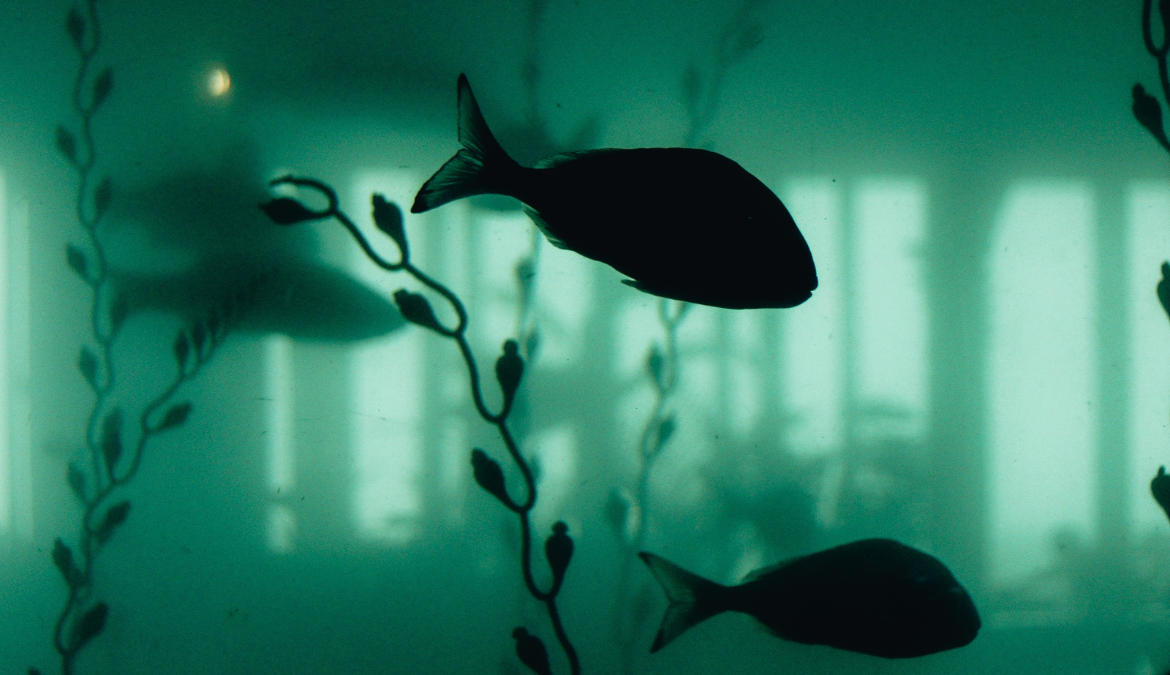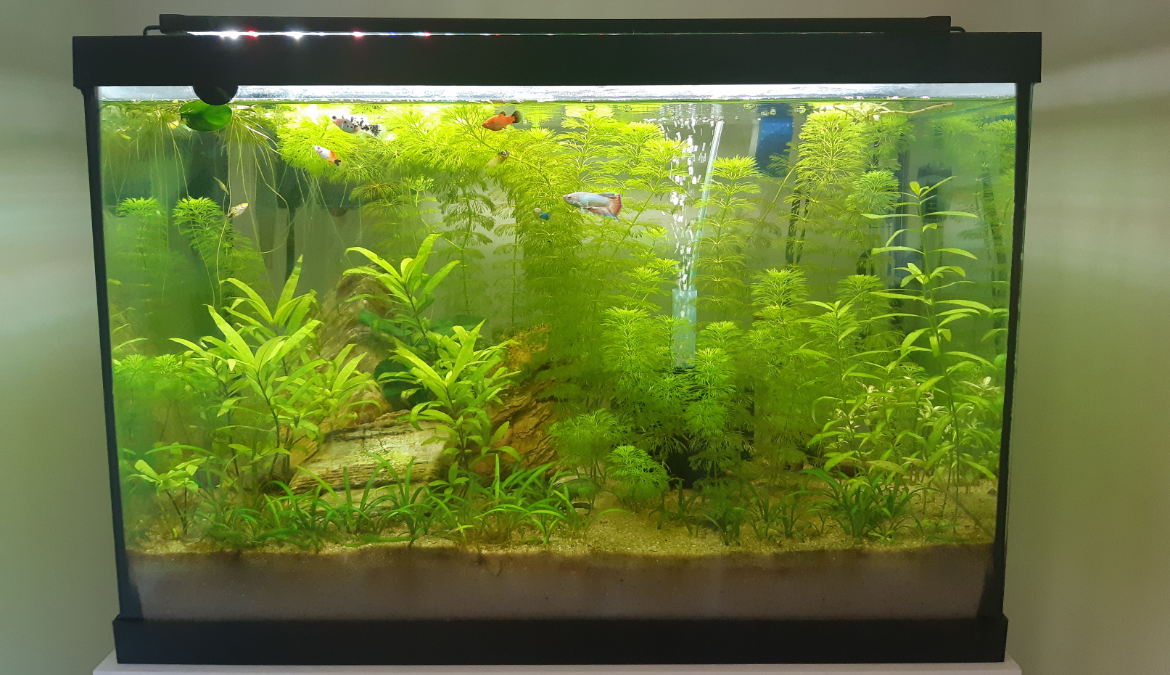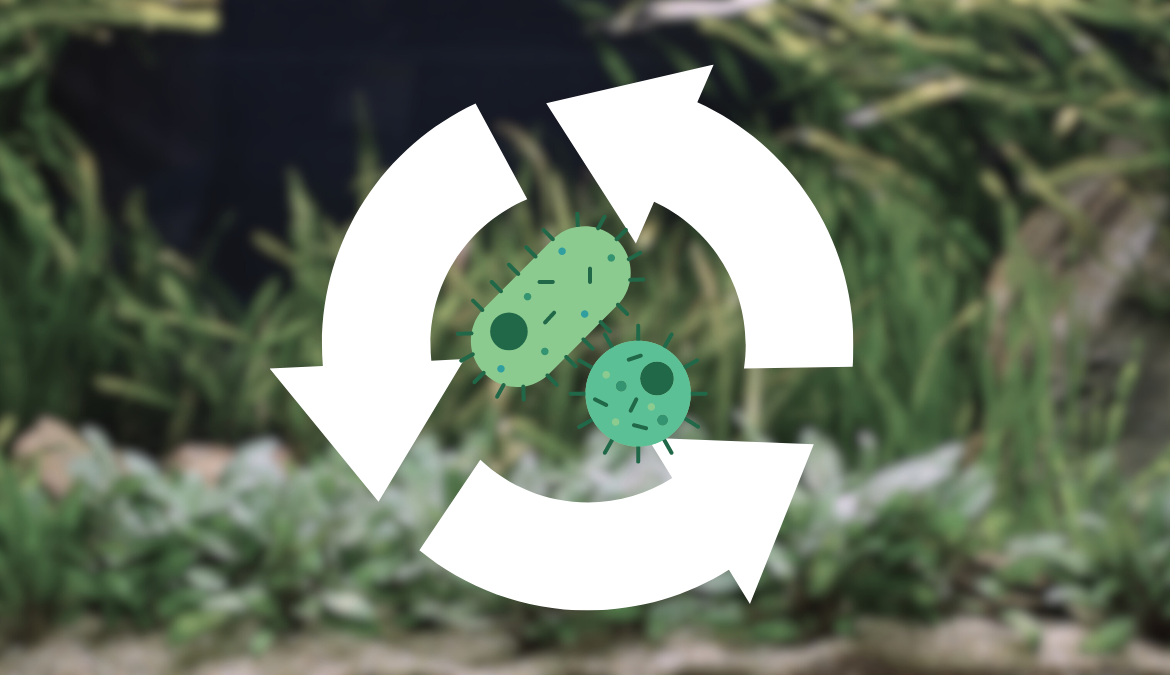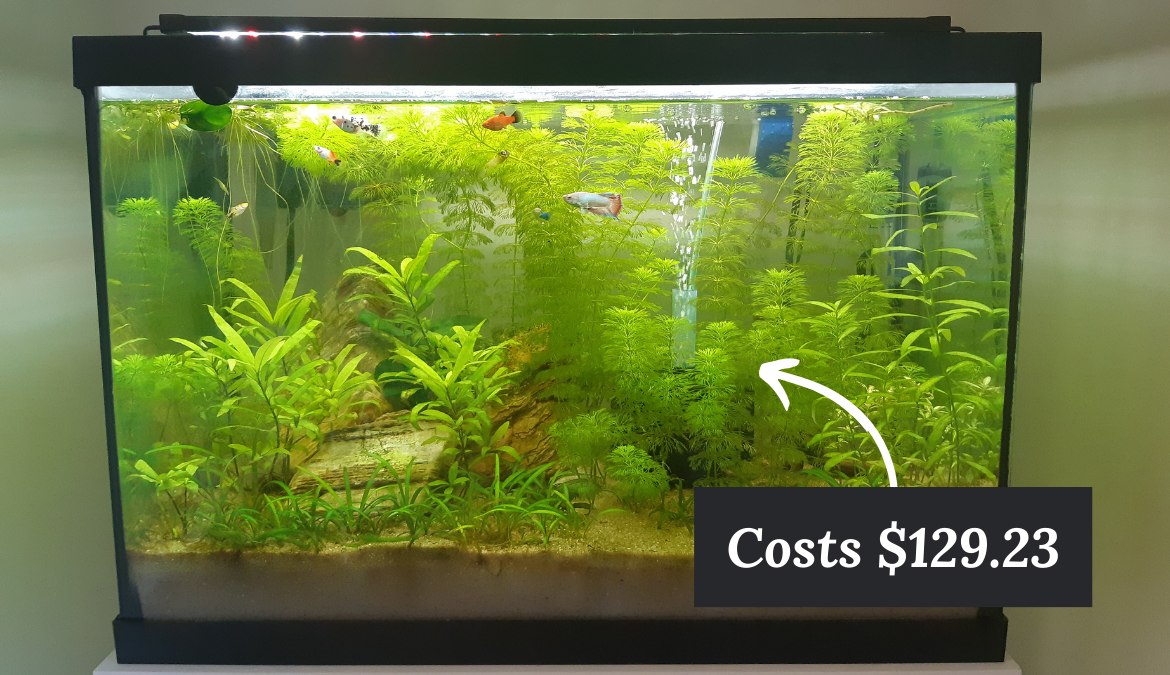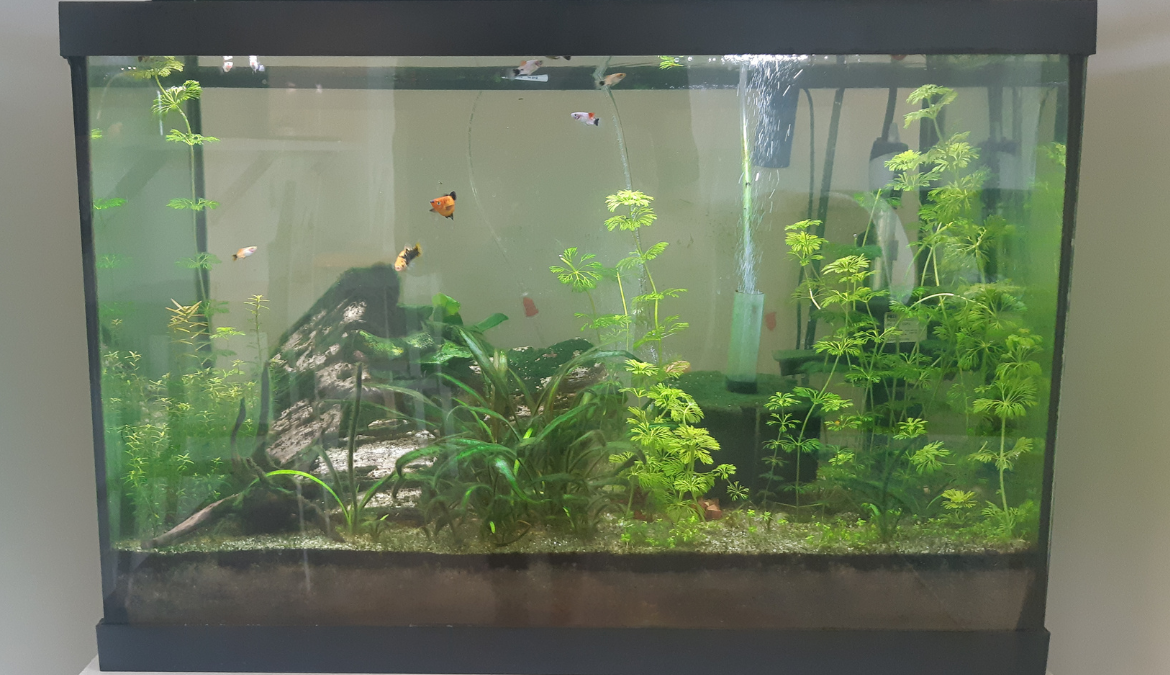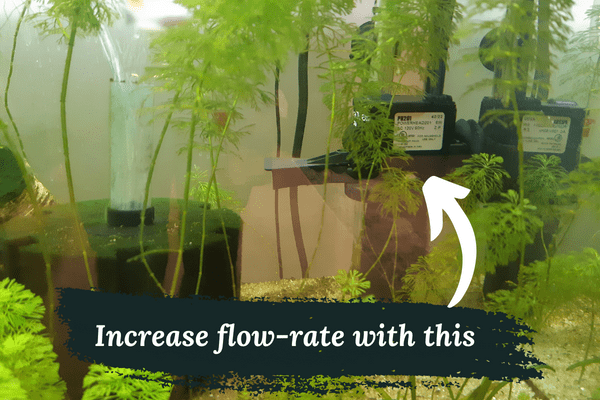Planted aquariums are about as easy to maintain as unplanted tanks. They require between 20-60 minutes of maintenance per week depending on their size and the level of maintenance required. The main extra tasks are adding fertilizers and propagation.
But there are a few factors that will cause your planted tank maintenance to be hard and more time consuming. This article shares best practices for keeping a low-maintenance tank.
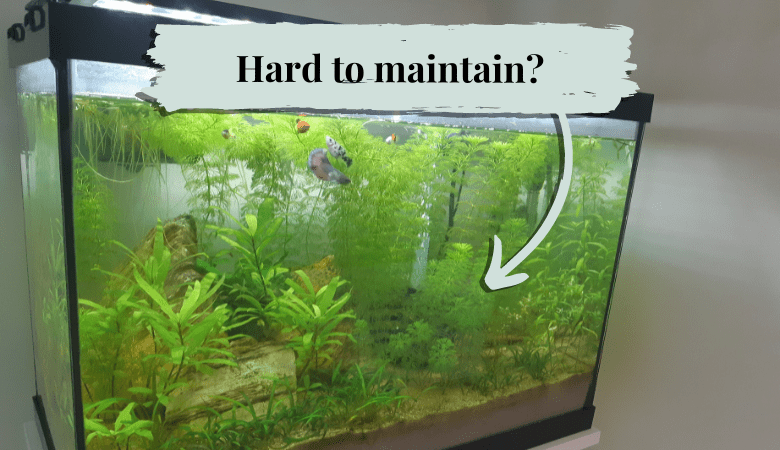
How do you maintain a planted aquarium?
There are a few relatively minor tasks that must be done to maintain and care for a planted aquarium. These include adding fertilization to promote plant growth, pruning and propagating plants as they grow, performing water changes, and adjusting lights.
Add fertilization each week
Most planted tanks will require added liquid fertilization once or twice per week. Most liquid all-in-one fertilizer products are sold with a pump so you can simply squirt a pump into your tank quickly as needed.
Aquatic plants require a variety of macro and micronutrients to develop and grow. These nutrients include nitrogen, carbon, phosphorus, potassium, iron, manganese, among others.
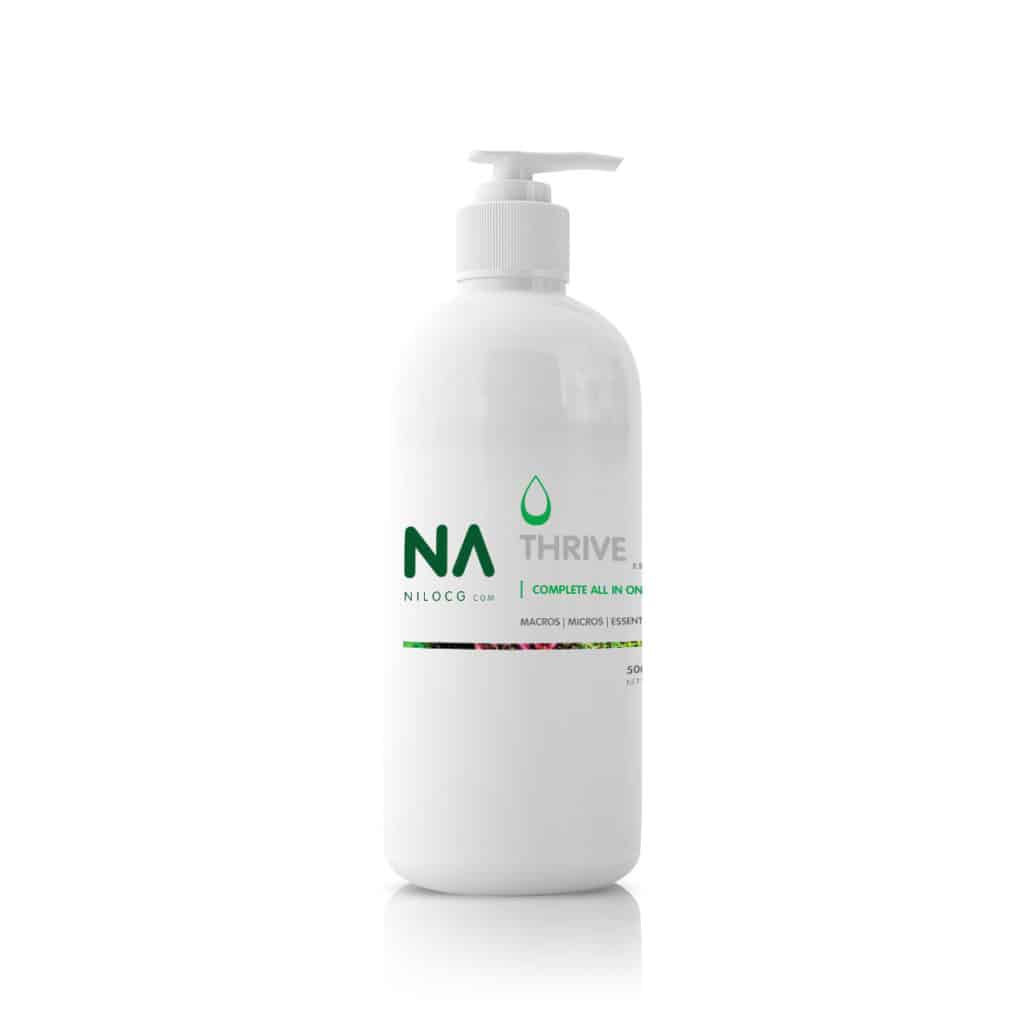
We are currently using Thrive liquid all-in-one fertilizer, which recommends dosing 4-8ml 1-2 times per week for low-light tanks and 3 times per week for high-light tanks. We have a low-light tank and dose 2ml twice per week.
This is technically extra maintenance that wouldn’t be necessary with a non-planted tank. But we would hardly consider this hard.
Trim and propagate overgrown plants
Healthy planted tank will also create a problem in the sense that they will eventually over grown your tank and require some trimming. We typically trim our plants about once per month and then propagate them by simply replanting them elsewhere in the tank.
Eventually, your tank may run out of space to plant new trimmings so you might consider adding them to other tanks, selling them, or discarding them.
The trimming process usually only takes about 10-minutes to do for us. However, you may choose to spend more time so that you can trim your plant more precisely to achieve a certain aquascape.
Water changes once per week
A once-per-week water change schedule is good practice for both planted and unplanted tanks. One reason it might be a little more important in planted tanks is to remove unused nutrients that might otherwise encourage algae growth.
Adjusting light intensity and photoperiod
The intensity and duration of a planted tank’s lighting will affect plant and algae growth, and will contribute to how hard the tank is to maintain.
Planted tank lighting must closely match the amount of nutrients and carbon available in an aquarium. Carbon is usually present in the lowest quantity in low-tech tanks because it occurs naturally in the water source and cannot be increased easily without a high-tech system.
As a result, it’s easy for planted tank keepers to dose too much light and create algae blooms. When this happens, it becomes a source of frustration and can make planted tank maintenance more difficult and time consuming as you learn to remove the algae.
However, an appropriate amount of light set to an automatic timer will allow you to put your lighting on cruise control.
For us, our 20-gallon planted tank no longer experiences algae problems. We set our light to an 8-hour photoperiod on a medium-low intensity.
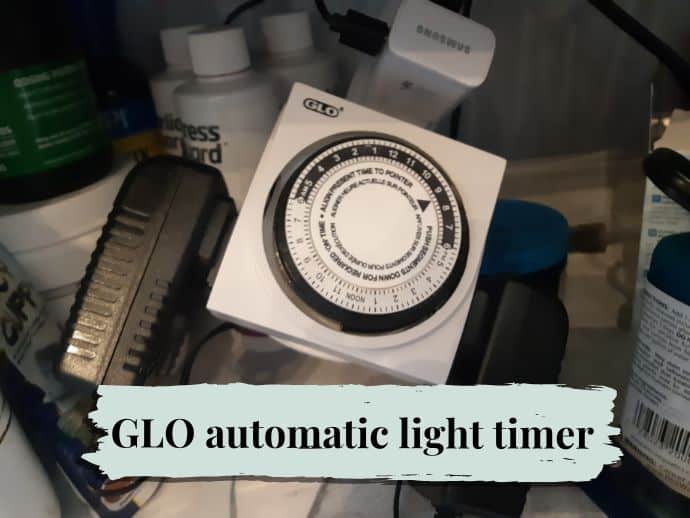
Occasionally we test a higher intensity as our plants grow. But this almost always causes green hair algae to begin growing. So we simply reduce the light intensity again and the algae problem resolves itself.
How much time do planted tanks take to maintain?
Planted tanks take between 20-60 minutes per week to maintain. On the low end, you will spend 20 minutes doing a small water change and dosing liquid fertilizer. On the high end, you may also trim and propagate overgrown plants and scrub algae.
One per month we like to do a deep clean where we will do a slightly larger water change, scrub the glass, vacuum the substrate and clean out the filter. These sessions might take 60 minutes.
Otherwise, maintaining a planted tank is not much more difficult than maintaining an unplanted tank.
What might cause some planted tanks to be more difficult to maintain than others?
Algae problems
Algae problems take more time to manage and are more common in planted tanks because of the increased light and fertilization. Algae is opportunistic and will utilize light and fertilization in the same way that aquatic plants will.
A well-established planted tank will have healthy plants that will likely outcompete algae for these nutrients. However, if there is an abundance of fertilization and light then then plants will be unable to use it all and algae will be more likely to grow.
You will experience a learning curve when setting up a planted tank for the first time. But you will eventually understand how much fertilizer and light your tank needs and will be able to avoid unnecessary maintenance.
Plants that don’t grow well
Planted tanks are easiest to maintain when the plants grow well and consume the available nutrients and light. If not, the excess nutrients will cause algae problems and make maintenance more difficult.
In our experience, a dirted tank has been the best method for growing plants. When done right, it allows for rapid plant growth and is easy to maintain.
Aqua soil setups work well too but we found that they have a prolonged break-in period. They leach nutrients directly into the water column which creates an excellent opportunity for algae to grow, which adds extra maintenance.
High-tech setups
High-tech setups don’t have to be a lot of extra work. But they certainly can be if you haven’t learned how to dose your nutrients, CO2 and lighting properly. The risk with high-tech setups is algae growth.
These tanks allow fishkeepers to increase the amount of nutrients, which is great for growing more lush plants. But incorrectly dosing might cause algae blooms and extra maintenance.
Small tanks are often harder to maintain
Small aquariums are harder to maintain because they accumulate waste more quickly. We’ve noticed that our 20-gallon tank has more stable water parameters and requires substantially less maintenance than our 10-gallon tank.


